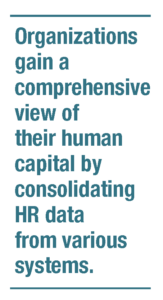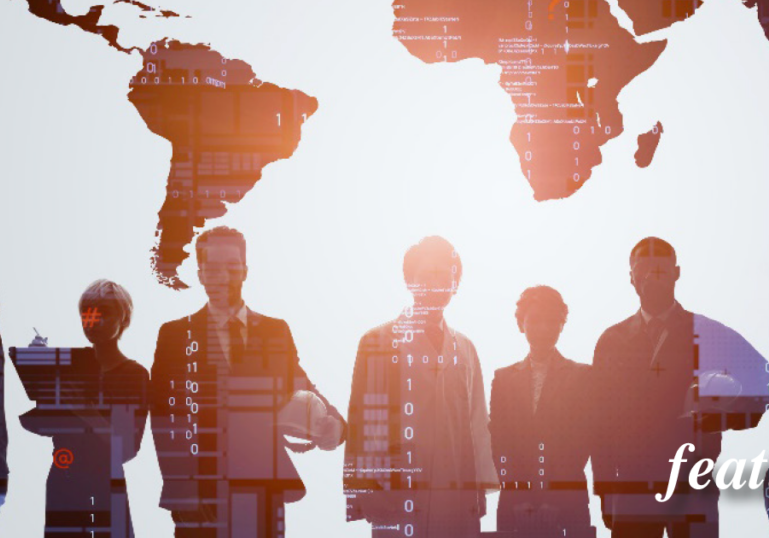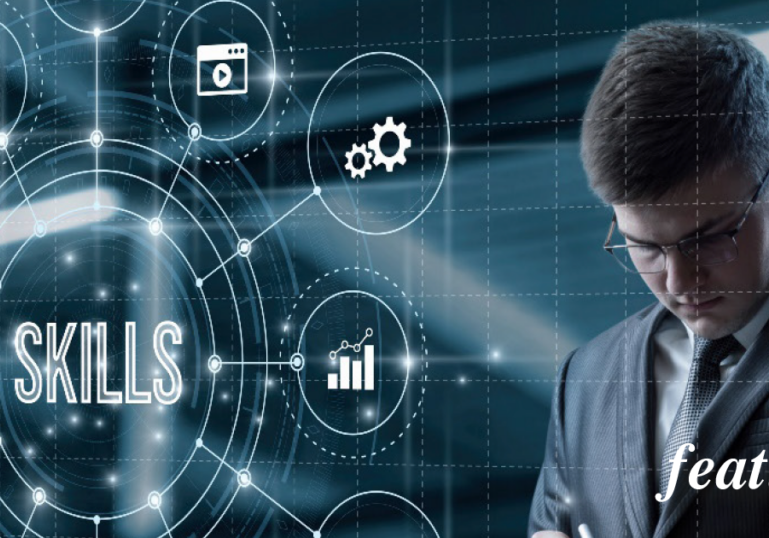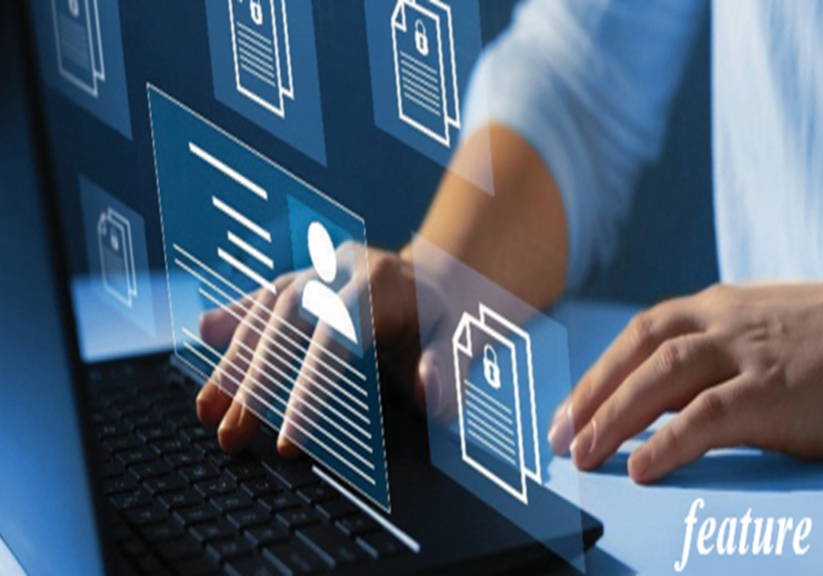Introduction
In today’s digital era, organizations constantly seek ways to optimize operations and streamline processes. Enterprise Resource Planning (ERP) systems and Governance, Risk, and Compliance (GRC) frameworks are two key components that play a vital role in achieving operational efficiency and compliance. When seamlessly integrated, ERP and GRC can enhance Human Resources (HR) enterprise application implementations, revolutionizing how HR processes are managed and driving organizational success.
Streamlining HR Processes through Seamless Integration
Integrating ERP and GRC with HR enterprise applications brings numerous advantages in streamlining HR processes. Organizations can automate and centralize various HR functions by leveraging ERP systems. The integration enables seamless data flow and eliminates redundant manual data entry, reducing administrative burdens and improving overall efficiency.
- Recruitment and Onboarding:By integrating ERP and GRC with HR enterprise applications, organizations can streamline the recruitment process from start to finish. The integration allows for automated job postings, applicant tracking, and resume screening. Candidates’ information can be seamlessly transferred from the recruitment system to the HR application, eliminating the need for manual data entry.
- Employee Data Management: ERP and GRC integration simplifies employee data management by providing a unified and centralized platform. Employee records, including personal information, employment history, and performance evaluations, can be accessed and updated in real-time. This eliminates the need for multiple data entry points and reduces the risk of data inconsistencies.
- Time and Attendance Tracking:Integrating ERP and GRC with HR applications allows seamless time and attendance tracking. Employees’ work hours can be recorded and synchronized with the HR system. This integration enables accurate monitoring of attendance, leaves, and overtime hours, eliminating manual calculations and reducing the risk of errors.
- Performance Management:ERP and GRC integration enhances performance management processes by providing a comprehensive view of employee performance data. Performance metrics, goals, and evaluations can seamlessly link with the HR application, allowing for real-time monitoring and feedback. The integration enables automated performance appraisal workflows, ensuring timely evaluations and facilitating continuous feedback.
- Payroll and Benefits Administration:Integrating ERP and GRC with HR enterprise applications simplifies payroll and benefits administration. Employee data, including salary details, deductions, and benefits information, can seamlessly synchronize with the payroll system.
- Training and Development:ERP and GRC integration enables organizations to optimize training and development initiatives. Training programs, certifications, and skill assessments can be linked with the HR application, providing a comprehensive training record for each employee.
Improving Data Accuracy and Integrity
Data accuracy and integrity are paramount in HR operations, and ERP and GRC integration plays a pivotal role in maintaining reliable HR data. Organizations can achieve data accuracy and integrity by consolidating data from disparate HR systems into a single integrated platform. This integration eliminates data silos and reduces the risk of errors or inconsistencies caused by manual data handling. With synchronized data flows, updates made in one system are reflected across all connected systems, providing a single source of truth for HR information.
- Eliminating Data Redundancy: When HR data is stored across multiple systems, it often leads to data redundancy and consistency. Integrating ERP and GRC with HR applications allows for centralized data storage, eliminating the need for duplicate data entry.
- Synchronized Data Flows: ERP and GRC systems can synchronize data flow across HR applications through seamless integration. When changes are made in one system, such as updating employee details or recording performance evaluations, the integration ensures that the updates are automatically reflected in all connected systems.
- Data Validation and Cleansing: As part of the integration process, organizations can establish data validation and cleansing protocols to ensure data accuracy. This involves implementing automated validation checks and data cleansing routines to identify and rectify errors, inconsistencies, and inaccuracies in the HR data.
- Audit Trails and Data Governance: Integrating GRC frameworks with HR enterprise applications enables organizations to establish robust data governance practices. GRC tools provide mechanisms to track and audit changes made to HR data, ensuring accountability and transparency.
- Role-Based Access Controls: ERP and GRC integration allows organizations to implement role-based access controls for HR data. This ensures that only authorized personnel have access to sensitive HR information. Organizations can protect employee data from unauthorized access or modifications by defining access rights and permissions based on job roles and responsibilities.
- Data Security Measures: Integrating GRC frameworks with HR applications enhances data security measures. GRC tools provide capabilities for encryption, data masking, and access control mechanisms to protect sensitive HR data. By implementing strong security measures, organizations can safeguard employee information from unauthorized access, data breaches, and cybersecurity threats.
Driving Compliance and Mitigating Risks
Compliance with regulations and mitigating risks are crucial aspects of HR operations. GRC frameworks integrated with HR enterprise applications provide organizations with the tools and capabilities to ensure compliance with legal, industry-specific, and data privacy regulations. Organizations can proactively address potential risks, implement internal controls, and track regulatory requirements by centralizing compliance monitoring and risk management within the HR application. This integration reduces non-compliance risk, safeguards sensitive HR data, and protects employee privacy.
- Regulatory Compliance: Compliance with legal and industry-specific regulations is a top priority for organizations. By integrating GRC frameworks with HR enterprise applications, organizations can establish a structured and systematic approach to compliance management. GRC tools provide functionalities such as policy management, risk assessment, and control monitoring.
- Data Privacy and Protection: With the increasing emphasis on data privacy, organizations must safeguard sensitive HR data. Integrating GRC frameworks with HR applications allows for the implementation of robust data privacy and protection measures. GRC tools provide data classification, access controls, and data breach detection capabilities.
- Risk Management: Organizations must use effective risk management to detect and reduce potential risks. Organizations can establish a comprehensive risk management framework by integrating GRC frameworks with HR enterprise applications. GRC tools enable risk identification, assessment, and mitigation strategies. Through this integration, HR professionals can assess risks associated with HR processes, such as recruitment, employee onboarding, and performance management.

- Internal Controls: Integrating GRC frameworks with HR applications enables organizations to implement internal controls to ensure process integrity and minimize risks. GRC tools provide functionalities for control testing, monitoring, and reporting. Organizations can define and enforce internal rules across HR processes by integrating these tools with HR applications.
- Audit and Compliance Reporting: Integrating GRC frameworks with HR enterprise applications simplifies audit and compliance reporting processes. GRC tools provide functionalities for audit trail management, reporting, and documentation. By integrating these tools with HR applications, organizations can generate comprehensive audit reports, track changes to HR data, and maintain documentation of compliance activities.
- Training and Awareness: Integration of GRC frameworks with HR applications enables organizations to enhance employee training and awareness regarding compliance and risk management. GRC tools provide functionalities for policy communication, training management, and attestation. By integrating these tools with HR applications, organizations can deliver compliance training programs, track employee completion, and capture attestation of policy adherence.
Empowering Decision-Making with Integrated Insights
One of the key advantages of ERP and GRC integration in HR enterprise application implementations is the ability to extract integrated insights for informed decision-making. Organizations gain a comprehensive view of their human capital by consolidating HR data from various systems. This integrated data can be leveraged to identify trends, analyze workforce performance, and assess talent development needs.
- Holistic View of Human Capital: ERP and GRC integration allows for consolidating HR data from various systems into a single integrated platform. This integration provides a holistic view of an organization’s human capital, including employee demographics, skills, performance data, training history, and succession plans.
- Workforce Planning and Analytics: With integrated HR data, organizations can perform workforce planning and analytics to align their human resources with strategic goals. By leveraging ERP and GRC integration, HR professionals can analyze workforce trends, predict future talent needs, and identify skills gaps.
- Performance Management and Talent Development: Integrated ERP and GRC integration insights can significantly enhance performance management and talent development initiatives. HR professionals can leverage integrated data to assess employee performance, identify high-potential individuals, and determine areas for improvement.
- Data-Driven Recruitment and Retention Strategies: ERP and GRC integration enables organizations to make data-driven decisions in recruitment and retention. Integrated insights allow HR professionals to analyze recruitment metrics, such as time-to-fill, cost-per-hire, and source effectiveness. This data-driven approach helps organizations identify the most effective recruitment channels, assess the quality of hires, and refine recruitment strategies.
- Succession Planning and Leadership Development: ERP and GRC integration supports effective succession planning and leadership development. Integrated data facilitates the identification of high-potential employees and critical positions within the organization. By analyzing talent data, HR professionals can identify potential successors for critical roles and develop targeted development plans.
- HR Analytics for Informed Decision-Making: Integrating ERP and GRC with HR applications facilitates HR analytics, enabling organizations to derive valuable insights from HR data. Through data visualization tools and dashboards, decision-makers can access real-time analytics on crucial HR metrics such as workforce demographics, employee engagement, turnover rates, and training effectiveness.
Challenges and Strategies for Successful Integration
Integrating ERP and GRC with HR enterprise applications presents specific challenges that organizations must address for successful implementation. One common challenge is system integration complexity, requiring coordination between multiple systems and databases. Organizations should develop a comprehensive integration strategy that includes thorough planning, effective project management, and stakeholder engagement. Clear communication, involving IT and HR teams, and conducting robust testing are essential to mitigate integration complexities.
- System Integration Complexity:
- Challenge: Integrating ERP and GRC with HR applications involves connecting multiple systems, databases, and technologies, which can be complex and time-consuming.
- Strategy: Develop a comprehensive integration strategy with clear goals, objectives, and timelines. Engage IT and HR teams from the beginning to ensure alignment and collaboration. Prioritize requirements and define integration scope to focus efforts on critical functionalities. Utilize experienced integration specialists or consultants to provide expertise and guidance.
- Data Migration and Consolidation:
- Challenge: Migrating and consolidating data from disparate systems into the integrated platform can be challenging and prone to errors, resulting in data inconsistencies and integrity issues.
- Strategy: Thoroughly plan data migration activities, including data mapping, transformation, and validation. Cleanse and validate data before migration to ensure accuracy. Conduct extensive testing to identify and rectify any data-related issues.
- Change Management and User Adoption:
- Challenge: Introducing a new integrated system requires changes to existing processes, workflows, and
 user interfaces, leading to resistance and adoption challenges among employees.
user interfaces, leading to resistance and adoption challenges among employees. - Strategy: Prioritize change management throughout the integration process. Communicate the integration’s purpose, benefits, and expected outcomes to employees. Early on, involve key stakeholders and end-users to gather input, address concerns, and generate buy-in.
- Challenge: Introducing a new integrated system requires changes to existing processes, workflows, and
- Ensuring Data Security and Privacy:
- Challenge: Integrating HR applications with ERP and GRC introduces potential security and privacy risks as sensitive HR data becomes accessible through the integrated platform.
- Strategy: Implement robust security measures to safeguard HR data. Ensure compliance with data protection regulations and industry standards. Employ encryption, access controls, and user authentication mechanisms to restrict access to sensitive information.
- Continuous Monitoring and Maintenance:
- Challenge: The integrated system requires ongoing monitoring, maintenance, and updates to address evolving business needs and technological advancements.
- Strategy: Develop a post-implementation system monitoring, maintenance, and support plan. Establish clear responsibilities and processes for handling system updates, bug fixes, and enhancements. Regularly review and evaluate the integration’s performance to identify areas for improvement.
Conclusion
Seamless integration of ERP and GRC in HR enterprise application implementations offers significant benefits to organizations. Organizations can achieve operational efficiency and enhance HR effectiveness by streamlining HR processes, ensuring data accuracy, driving compliance, and empowering decision-making. However, successful integration requires careful planning, addressing challenges, and adopting best practices. Organizations that embrace ERP and GRC integration in their HR operations will be better equipped to optimize HR processes, meet regulatory requirements, and make data-driven decisions, ultimately contributing to their overall success and competitive advantage in today’s business landscape.
References
- Abdoulmohammad G.C., Feybi A. G., and Mahdieh G. J., (2011). “Enterprise Resource Planning (ERP) Implementation Process: Project Management Perspective,” Advanced Materials Research, Vol. 338, pp. 152-155, https://bit.ly/44liTBv.
- Alhalboosi, Faeq Hamad Abed, Suha Jamal Mawlood, and Imad Ali Mahmood Al-halboosi. “Role of ERP Systems in Improving Human Resources Management Processes.” Review of International Geographical Education Online 11, no. 4 (2021), https://bit.ly/3ODic0N.
- Bo Zhao, Chunlei Tu, “Research and Development of Inventory Management and Human Resource Management in ERP,” Wireless Communications and Mobile Computing, vol. 2021, Article ID 3132062, 12 pages, 2021. https://doi.org/10.1155/2021/3132062
- Disha Gupta. “20 Best HCM Software & Systems, 2023, https://bit.ly/3P0WwwO.
- Jackson Leonard A., (2010). “Enterprise resource planning systems: revolutionizing lodging human resources management,” Worldwide Hospitality and Tourism Themes, Vol. 2, Iss 1, pp. 20 – 29, https://bit.ly/47wwPM5.
- Papazafeiropoulou, Anastasia, and Konstantina Spanaki. “Understanding governance, risk and compliance information systems (GRC IS): The experts view.” Information Systems Frontiers18 (2016): 1251-1263. https://doi.org/10.1007/s10796-015-9572-3
- Patterson, Tom, and CPA Complex Solutions Executive. “The use of information technology in risk management.” Complex Solutions Executive IBM Corporation(2015). https://bit.ly/3qCwTsY.



